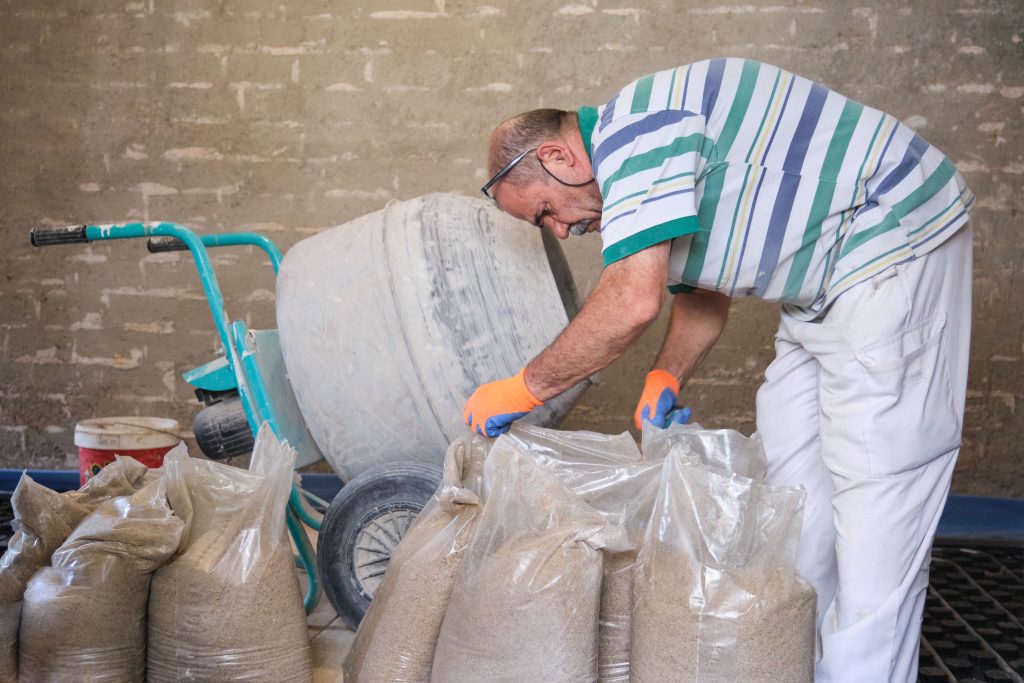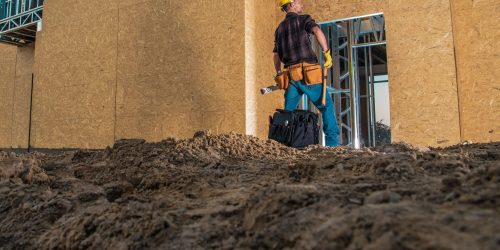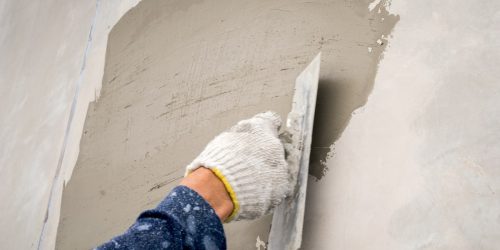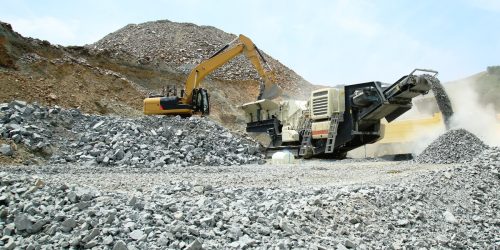
When it comes to the robust, textured charm of stucco, supply, and quality are paramount for construction companies aiming to deliver top-notch projects. Stucco has been a popular exterior finish for homes and buildings for centuries. Its versatility, durability, and aesthetic appeal make it a favorite among construction professionals.
However, beyond traditional applications, there are several unconventional uses of stucco supply that can benefit construction companies, particularly those located in Miami. Join us as we explore these uses, which are guaranteed to expand your horizons and inspire your next project.
 The Evolution Of Stucco In The Construction Business
The Evolution Of Stucco In The Construction Business
Stucco, a game-changer in the construction industry, has undergone a remarkable evolution. Originally just a blend of cement, lime, and water, this plaster has reshaped the way buildings look and feel. Its journey from a basic exterior finish to an essential product for both residential and commercial projects speaks volumes. Stucco supply companies have been at the forefront, constantly innovating to meet the quality and needs of diverse customer projects.
The role of the stucco manufacturer cannot be overstated. Refining the product’s quality and versatility enabled stucco to transition from a conventional plaster to an unconventional marvel in the construction realm. Be it the crisp finish on an exterior façade or the subtle sophistication of an interior wall, stucco supplies have become indispensable.
With the upsurge in demand, supply companies ensure they carry an array of options. From different finishes to systems that cater to both aesthetic and functional needs, the emphasis is on providing top-notch products.
Here are ten inventive ways to use stucco materials, including plaster, lath, and foam, which your business might not have considered before.
1. Implement Decorative Architectural Elements
Stucco supply, particularly foam products, can be used to manufacture decorative architectural elements such as cornices, moldings, and columns. These elements can add a touch of elegance to both the interiors and exteriors of buildings. With a reliable foam manufacturer, professional construction supplies companies in Miami and beyond can carry an array of designs, making their offerings more diverse.
Construction professionals can implement ornate cornices, intricate moldings, and grand columns using high-quality foam products that are readily available through stucco supply. These elements can serve as the finishing touches that elevate the appearance of an exterior façade or provide an air of sophistication to an interior space.
2. Enhance Landscaping Features
Surprisingly, stucco materials can also enhance landscape features. Using stucco-covered foam, businesses can create durable and aesthetically pleasing landscape designs, which include everything from benches to planters. This unconventional application speaks volumes about the versatility of stucco products.
One key advantage of using stucco in landscaping is its durability. Stucco-covered foam structures can withstand the elements, making them a lasting addition to any outdoor space. Simultaneously, stucco’s smooth finish brings an element of sophistication and style, elevating the overall look of the landscape.
3. Sound Dampening Solutions
Utilizing stucco for sound dampening is another innovative approach. The plaster in stucco can be applied in layers with other sound-dampening materials to reduce noise pollution, making it ideal for businesses or homes located in noisy areas.
Besides reducing noise infiltration, stucco also adds a layer of thermal insulation, contributing to energy efficiency in buildings. Furthermore, its durability ensures that the sound-dampening qualities are maintained over time without significant wear and tear.
4. Outdoor Fireplaces And Fire Pits
Stucco is an excellent material for constructing outdoor fireplaces and fire pits. It can withstand high temperatures and, with proper sealing, can resist weathering, providing a cozy gathering spot for years to come.
Stucco fireplaces and fire pits are ideal for those seeking a low-maintenance option. Once installed, they require minimal upkeep beyond occasional cleaning and resealing to keep them looking as good as new.
5. Interior Flooring
Stucco isn’t just for walls; it offers a unique and attractive flooring option, particularly appealing for spaces with a desired rustic or Mediterranean ambiance. Its durability and easy maintenance make it suitable for high-traffic areas like living rooms, kitchens, and bathrooms.
Choosing stucco for flooring allows for customization in texture and color, offering a unique aesthetic that can be tailored to fit any interior design scheme. Its earthy tones and natural finish provide warmth and charm, contributing to a welcoming atmosphere in any room.
6. Eco-Friendly Building Solutions
Incorporating stucco supply into eco-friendly building solutions is becoming increasingly popular. ASR Materials can recommend stucco for green projects due to its natural materials and energy efficiency, enhancing the brand’s commitment to sustainability.
Stucco acts as an excellent insulator, helping to regulate indoor temperatures. This can reduce energy consumption as it keeps homes cooler in the summer and warmer in the winter. Consequently, it can lower a building’s carbon footprint, making stucco a smart choice for environmentally conscious projects.
7. Custom Planters
The strength of stucco makes these planters ideal for both interior and exterior settings, as they can withstand various weather conditions without deteriorating. Moreover, the adaptable nature of stucco allows for creation in a multitude of shapes and sizes, offering limitless possibilities for personalized design. Stucco can be sculpted to match whether you desire sleek, modern geometries or intricate, traditional patterns.
Incorporating planters into a space not only promotes a greener environment by supporting plant life, but using stucco can also be seen as an eco-friendly choice. Stucco, as a material consisting of natural components, aligns with sustainable building practices.
8. Signage
Businesses looking for unique signage can use stucco to create durable, three-dimensional signs. Stucco signage is attention-grabbing and withstands the elements better than many traditional materials. It stands out in the literal sense. Its three-dimensional aspect provides depth, making any business name or logo pop. This tactile quality can be more engaging for potential customers, making the business more memorable.
Stucco is an excellent material for exterior signs due to its inherent durability. It is resistant to elements such as sun exposure, wind, and rain, ensuring that the sign remains intact and vibrant for years. This resistance to weather-related wear and tear makes stucco a cost-effective option, as it requires less frequent replacement or maintenance compared to traditional sign materials.
9. Architectural Accents
Stucco is a favorite medium for creating architectural elements that add both character and elegance to a building’s facade. Craftsmen can use stucco supplies to produce various decorative and functional accents, including columns, moldings, and keystones.
The addition of stucco columns, moldings, and keystones can significantly increase a building’s curb appeal, potentially elevating its perceived value. This is beneficial not only from an aesthetic standpoint but also from a real estate perspective.
 The Stucco Location Advantage: How Stucco Supply Matters
The Stucco Location Advantage: How Stucco Supply Matters
Location is everything in the world of stucco supply. An advantageous location ensures the availability of high-quality stucco products and the flexibility and efficiency of delivery. Leveraging location for efficient stucco supply involves selecting a supplier that’s not just geographically convenient but also offers a breadth of products and knowledgeable and friendly support.
For contractors looking to establish a competitive edge, choosing a stucco supply partner that understands the nuances of architectural requirements, weather considerations, and construction products is crucial. We recommend you explore our website, learn about our mix and application methods, and ultimately discover how our location and quality stucco supplies can cover all your project needs.
The Variety And Versatility Of Stucco Supply
The construction landscape is incredibly diverse, necessitating a stucco supply that can match this versatility. Our inventory spans the best stucco brands recommended by construction professionals nationwide. These products provide the reliability and quality that contractors trust and the variety needed to address different projects’ specific architectural and material requirements. Understanding each brand’s unique benefits allows your business to optimize application methods and material use, ensuring a superior finish every time.
We are proud to offer a knowledgeable team ready to share expert advice on selecting the perfect stucco brand for your project needs. Whether it’s navigating the latest in stucco technology or choosing the right tool for the job, your construction business will benefit from our extensive experience and commitment to providing the highest quality products at competitive prices.
Visit our store to explore our full range of stucco supplies, from drywall and concrete to lath, foam, and molding. Contact us to help you establish a strong foundation for your construction projects and ensure you have access to the best stucco products across the United States.
LOOKING FOR THE BEST SUPPLIER IN SOUTH FLORIDA?
YOU FOUND US, ASR MATERIALS.
 The Evolution Of Stucco In The Construction Business
The Evolution Of Stucco In The Construction Business The Stucco Location Advantage: How Stucco Supply Matters
The Stucco Location Advantage: How Stucco Supply Matters




